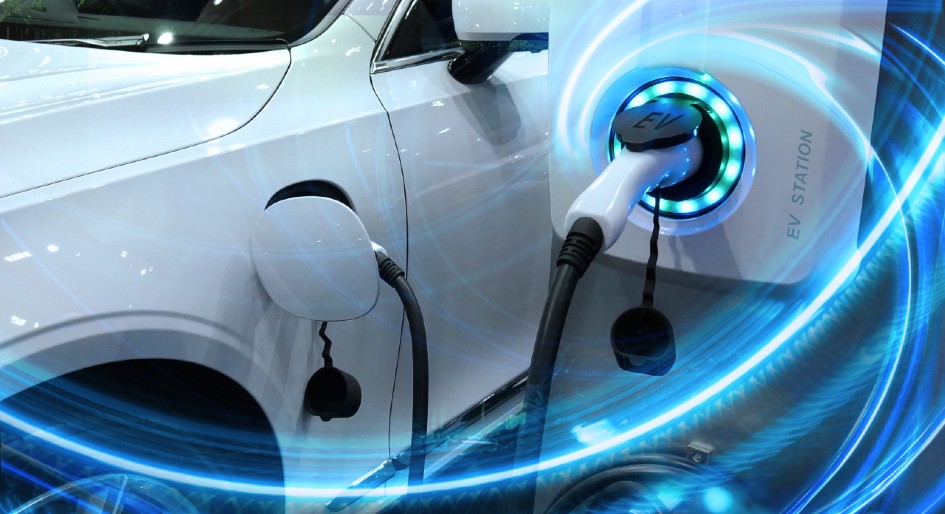As the country moves to accelerate electric vehicle adoption and ban new gas-powered car sales by 2035, questions are brewing among people living in multi-unit dwellings when it comes to installing EV infrastructure in parkades, costs allocated to owners, and anticipating power needs.
A well-known hurdle, particularly in aging condos, is limited electrical capacity. Rob Detta Colli, manager of energy and sustainability with Crossbridge Condominium Services, sees the main challenge in older buildings being a board coming to realize that no building has the electrical capacity from a utility to allow a charger in every parking spot. “This forces the board down the path of having to consider a compromise solution, which will naturally not satisfy everyone who lives in that building,” he says.
At the same time, he doesn’t see a technological barrier to charging. “There are a few good solutions available to outfit most condos with roughly 20 vehicles,” he says. “In the average 200-unit building, that’s 10 per cent of the parking stalls, which is much larger than the current sales rate of less than two per cent BEV and plug-in hybrid in Ontario.”
A few years ago, EV chargers were installed at The Palace Pier, a 42-year-old condo in Toronto. Back then, the board conducted a technical review, installed a costing system, sent out a survey to anticipate demand, and converted two visitor parking stalls to accommodate communal chargers. “At the time, we estimated that we might have 10 or 12 electric vehicles in the building within the next few years,” says Board Secretary Thelma Beam. “But that was pre-pandemic.”
The condo still has just a few EVs, but with changes to the Condo Act, the board expects more requests for chargers in parking spaces once more people start buying cars again post-pandemic.
Neil Denney, executive vice-president of InLight, a lighting retrofit and EV-charger installation company, says corporations will need more future-forward thinking because the amount of power required in the next decade will be vastly different than what is required in a year or two.
For now, most garages can likely manage 40 EVs with some aggressive sharing, adds Detta Colli. “You’d have to show the owners of the condo that aggressive sharing will work; you’d have to show them when the chargers are being used and how much they are being used,” he says. “With that, the board should be OK with going from 20 to 40 quite easily.”
Potential potholes
Amendments to the Condo Act in May 2018 removed legal barriers for corporations wanting to install EV-charging systems and for owners wishing to gain board approval themselves. These regulations removed some red tape. Still, retrofitting charging infrastructure into existing condos remains a challenge, says Beam, who has reservations about future retrofits her condo will require to meet demand.
While energy retrofits created extra electrical capacity in her condo as a result of lower consumption— capacity that can now be used for other things like EV chargers—she says in order to distribute this power from the electrical panel to faraway parking spots there will need to be adequate infrastructure, which could be costly.
“If somebody comes in and says, I want to put an EV charger in my parking spot, we can give it to them and a few more people and then we’re done,” she says. “Then, it’s going to cost us about a quarter of a million dollars to put in this other infrastructure to distribute the electricity to everyone else who might need it.”
Developers of new condos are roughing-in conduits, leaving a pathway for future wiring that will ultimately save time and money when EV demand rises. Older buildings will need to start from scratch.
Laura Bryson, COO and co-founder of EV-charging company SWTCH Energy, says in aging buildings, electrical capacity may be limited and installation may also require bringing power up or down a level, which can be expensive. As she explains, “where possible, it is ideal to locate the EV-charging stations in parking spaces close to the electrical room to reduce material and construction requirements, or install a panel in a central location that limits costs for individual owners to have a charger installed in their private parking spots.”
New technology paving the road forward
New technology is helping to address some concerns older condos are facing, with long-term solutions like open standards and dynamic load management. As Bryson explains, Open Charge Point Protocol (OCPP) is the global open communication standard for EV charging and is similar to buying an unlocked cell phone where users can select a service provider. “The same goes for EV-charging stations,” she says. If you’re unhappy with the service, or network management fees increase, OCPP ensures you’re free to switch to another service provider without risking your hardware investment.”
Dynamic load management involves charging stations talking to each other in real-time to share available electrical capacity. “This helps minimize infrastructure costs upfront and over the long-term as more charging stations are added to the system,” she notes.
It’s an approach being used in New Times Square, a 20-year-old, 375-unit condo in Toronto, which faced notable capacity constraints. An in-depth case study reveals how the condo used network management to install 14 private chargers and prepare for scaling EVs. Ultimately, capacity was increased to support 32 to 40 chargers in a load-managed layout. Automatic energy and billing will also allow the condo to recoup energy costs from EV owners.
Bryson also notes that it’s more common to find Level 2 chargers in condos. Each station, at full output, requires the same volt circuit as a washer and dryer. “Level 2 is considered the sweet spot for multi-family buildings because it satisfies charging requirements for plug-in hybrid and battery electric vehicles cost-effectively,” she says. “DC fast-charging (or Level 3) is much more expensive and makes sense for public settings along highways or in retail locations where EV owners need a quick charge to finish their journey.”
Scanning ahead
When planning long-term for EVs, legal documents should be detailed and thorough. If not, Beam says there is nothing stopping owners from putting in any system they desire, which doesn’t help link all the cars together if demand ramps up. She recommends implementing a system that will share the electricity.
As she explains, corporations should have an Electric Vehicle Supply Equipment (EVSE) Agreement, which should include some of the following: indicate the intended use of the installed units; recognize that the corporation has full control over the final configuration of the system; indicate that the corporation has the right to modify any portion of the system in order to facilitate the installation of additional units; and affirm that the corporation owns the electrical junction box, as well as all associated conduit, pull boxes and cabling. It should also make clear who is responsible for costs and that the job be conducted by a licensed electrician.
For condos anticipating EV-charging infrastructure, Detta Colli says each board of directors should consider their options before a request comes in, as they will need to reply within a legislated 60-day period. “Once they get a request, the regulations start the clock and they have only so many days to formally respond,” he says.
An electrician will need to verify the loads in the building by scanning bills and inspecting the main electrical panel. It is then recommended to gather quotes from a few EV contractors who should be able to clarify all the costs associated with short, medium, and long-term needs.
Rebate debate
Despite Canada’s mandatory target of 100-percent zero-emission light-duty vehicle sales in a little over a decade, a lack of available government funding remains an ongoing obstacle. As Detta Colli says, “there is a perception that there are many incentives out there for EV infrastructure.” The only one that exists, at least in Ontario, is the multi-phase Zero-Emission Vehicle Infrastructure Program (ZEVIP), which he finds many contractors have over-hyped, despite it not being a great fit for condos.
The program requires a minimum of 20 chargers to be working by a certain deadline, and the government is encouraging collaboration between groups to meet that minimum per application.
“Boards can commit to installing the infrastructure for the chargers, but they can’t commit to the individual charging stations being up and running by that date,” he says. “Some condos looked at making a joint application, but it got confusing quickly, so they dropped it.”
The Liberal government promised $280 million for this program over five-years ending in 2024. Denney says it may sound like a lot of money, and although it’s a start, the funds are unpredictable and likely won’t be enough to support the government’s ambitious greenhouse gas reduction targets. “They made it very difficult on stakeholders and it’s obvious they are under-resourced to deal with all the applications they are getting,” he says. “It’s not as user friendly as other energy rebates.” After a previous round, his company was among the 75 per cent that didn’t receive funding. That was after several months of waiting to hear back.
A RFP that was focused on EV charging in the multi-residential sector closed June 22. Another round is expected to be renewed next year, with a proposed deadline of May, 2022. In other rounds, third-party delivery agents—local governments and not-for-profits— could also receive up to $2 million for end users, and many people are looking to get funding through these streams.
Chicken or the egg
Apart from few available incentives is the reality that more zero-emissions vehicles are coming and condos will have to plan for a future where internal combustion engines are passé.
Earlier this year, a KPMG survey found 68 per cent of Canadians who plan to buy a new vehicle within the next five years stated they will “very likely or likely” buy an electric vehicle, pure or hybrid. An estimated 61 per cent said the pandemic made them realize that they need a vehicle, as they’d rather drive than take public transportation.
Laura Bryson says her company is seeing more uptake in both new construction and existing buildings. “There is particularly high demand in geographies where local requirements require certain parking spaces to have conduit rough-in to support future installation,” she says, pointing to the Toronto Green Standard and several municipalities in B.C.
Whatever charging decisions boards and management make should be in the best interest of all the owners, says Detta Colli. At the moment, he doesn’t see a surging demand for EV charging in condos—yet. “This makes sense, given battery and plug-in hybrids made up only 1.8 per cent of new vehicle sales in 2020,” he notes. “The rate of EV sales is likely to go up, but it will take time to replace the fleet that is out there now.”
Looking to the future, Beam anticipates a multi-year project ahead. “We need to start budgeting for it and designing it so when demand hits us, probably not for at least another year, we’ll be ready with an interim step.”






